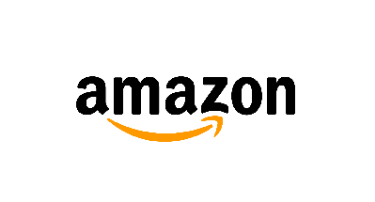The Pixilation of Food Retail 7/28/2017
Is there any stopping Amazon?
If one uses Amazon’s stock price to evaluate then the answer is clearly, NO. With the stock price now over $1,000 a share there seems to be no end in sight for Amazon’s continued growth.
I would have thought that the Amazon chiefs would have made their first acquisition into the bricks and mortar world by acquiring Best Buy, which was heavily rumored a few years ago, particularly since many view Best Buy as a brick-and-mortar showroom for items that would ultimately be purchased on Amazon anyway.
However, Amazon surprised everyone with the news that it’s acquiring Whole Foods, and that news continues to reverberate throughout the grocery industry, and speculation abounds on what this acquisition means for Whole Foods, its employees, competitors and the food retail industry as a whole.
Old habits die hard
Having worked closely in the retail industry and intimately with grocery retail giants Albertsons and Kroger, I have witnessed personally the challenges of operating a full-service grocery store on a street-by-street and town-by-town basis, winning customers one shopper at a time. The intricacies of executing national programs is daunting and not for the faint of heart. I’ve been a partner in a multicultural marketing firm, which has helped grocery clients fill the aisles with full baskets while the competitor across the street had an empty parking lot. There is art and science to being an effective grocery marketer and merchant. I can also attest that, like any business clinging to what worked in the past, as a trajectory into the future is short sighted and will bear few fruits.
I’ve seen personally the challenges of stores that bear the name of legendary founders like Walton, Kroger and Albertsons. As an executive in the multicultural space you are almost by definition an agent of change. It goes without saying that I’ve met forward thinking executives as well as those that are change adverse. I’m not sure for the reasons behind reluctance to what seemed proposals that were in step with the times. Proposing participation in Pride Week, for example, or programs that focus on shoppers from different countries and unique languages and exotic ingredients may have been just intimidating for a grocery executive where success and risk is measured one can of peas at a time.
Amazon and Whole Foods don’t get a pass—they too have to face a changing demographic landscape that they need to consider; one in every three individuals is African American, Asian American or Hispanic and the fastest growing in all demographic categories is the multiracial segment.
Put aside conventional wisdom
Nevertheless, the time has come for daring vision and bold execution as amply demonstrated by the Whole Foods acquisition by Amazon. No sitting on the sidelines allowed—the consequences for hesitation are too great. I can only imagine that every idea is on the table, ideas being kicked back and forth during the initial conversation for the acquisition.
An opportunity to think and act differently
For years, traditional grocers counted on scale and years of building out impressive networks of thousands of locations to best serve the community and to get favored pricing from vendors. With Whole Foods that barrier for entry is wiped away. Nevertheless, there is the cost factor to be a viable option in the competitive grocery space. Perhaps, the Amazon and Whole Foods acquisition will clear the way for further convergence within the grocery category. That game belongs to any corporate coffer that can afford it.
There’s an argument to be made that if big is good bigger is better. There’s still room for further consolidation to enhance online distribution and continue to serve the individual who wants to select their own avocado for ripeness. There are formidable independents across the country, Hy-Vee in Nebraska and Iowa, Wegmans in New York and Harmon’s out west. Any of these chains would add to any grocer’s portfolio of brands.
Regardless, there are no new markets. There aren’t any new customers. The whole engagement is about trying to convince someone else’s customer that you have a better proposition, cheaper, better, faster, closer—develop some distinction from where they currently shop.
So is more competition good for everyone even through non-traditional means like Amazon/Whole Foods? Or does the $13 billion dollar acquisition simply make what has been a challenging business more challenging?
Either way, Amazon has taken on a formidable challenge to compete in a competitive space that requires the rigors and discipline that has come from decades of experience. On one hand Amazon can go down parallel paths—serve those who want groceries/fresh produce delivered to the door—and, continue to serve those who enjoy the in-store visit. Regardless, every grocery executive worth their salt is on call to evaluate every aspect of their business. Something tells me business as usual is going to be an acceptable outcome.
Many of today’s successful leaders started by sacking groceries and have implemented practices that have served the industry for decades. Then again, maybe it’s time for changes that come form a different point of view. Just because grocers continue to do things the way they’ve always been done isn’t much of an argument for a vision forward. The Amazon/Whole Foods acquisition will test the fortitude of leaders across the grocery spectrum. Their ability to act, their ability to forego sacred cows that prohibited change and many ways kept innovation and reluctance to change locked down.
I’ve been pixilated
Amazon, too, will face similar challenges as its colleagues from other well established grocers now that they have chosen to enter one of the most challenging and risky businesses in retail. This is one of those interesting moments in business history where you have an initial plan but the market variables (consumers) will ultimately define what it is to become with traditional grocery chains compared to the digitally focused food merchants.
Maybe Amazon will change the grocery model forever. Or, it will succumb to the realities of the food business. Grocery will always have a touch-and-feel (and smell) component that just cannot be experienced in a pixelated format.
Sometimes I want to take time to shop and wander the store and touch and smell the merchandise, and many consumers feel the same way when it comes to food. I might even change my mind at the last minute and ask the associate behind the meat counter, “Would you mind cubing this London broil that’s on sale—I think I’ll make grandma’s recipe tonight for chile colorado.”


Armando Martín lives in Denver, Colorado, enjoyed a successful career in corporate America that carried him throughout Latin America. Armando co-founded the country’s first multicultural retail marketing agency, XL Edge. He currently devotes his consulting practice to multicultural strategy and retail leadership. He is also on the board of the National Hispanic Voter Education Foundation